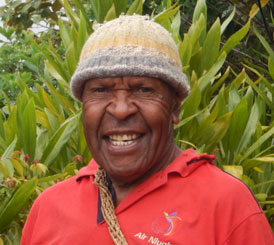
Joseph Tano is a local guide based at Rondon Ridge. Joseph was born in Wabag in the Enda Province in 1967 and went to Wabag High School. In 1981 he was taken "under the wing" of Andre Miller, an expert and well known authority on PNG orchid species, and he studied orchids under her. During this period, Joseph was introduced to the PNG Bird Society with the University of Papua New Guinea and that is where his interest in birds started. Joseph has been a birding guide ever since. Joseph has mainly been with the birds in the Highland Provinces of PNG but he has also spent extensive time in the lowlands and with waterbirds etc. Joseph has been a specialist birding guide with Trans Niugini Tours since 2001 and is currently based at Rondon Ridge at 7,100 feet above sea level in the Western Highlands.
Joseph welcomes all birders and will ensure that you have a successful birding visit to Rondon Ridge showing you the endemic birdlife in the area.
|
| Papua New Guinea
The Independent State of Papua New Guinea (PNG) is a sovereign state in the eastern half of the island of New Guinea and is approximately 178,700 square miles (462,840 square kilometers) in size. PNG is bordered by Indonesia to the west (Papua and West Papua) and to the east are the other island groups that make up Melanesia, of which PNG is part of; these include the Bismarck Archipelago, Solomon Islands, Vanuatu, Fiji and New Caledonia. Sitting to the north of PNG, by some way, is Micronesia and to the south, much closer, is Australia. It is only 93 miles (150 kilometers) across the Torres Strait to the tip of the Cape York Peninsula in Queensland, and approximately 370 miles (595 kilometers) to the Top End of the Northern Territory. The capital of PNG is Port Moresby, located along the southeastern coast of the Papuan Peninsula section of New Guinea, also referred to as the 'Bird's Tail' because New Guinea is often considered to be shaped like a bird-of-paradise!
One of the most culturally diverse countries in the world, PNG is still known to harbour uncontacted peoples living in the remote and difficult-to-access parts of the country. Most of the country's estimated population of nearly nine million people live in rural areas, with only 13% living in urban areas. Of those living in rural areas, most live in customary communities which are incredibly diverse. Languages continue the diversity trend, with over 850 different languages known in the country, making it the most linguistically diverse place in the world! Nearly 40% of the population exist in a self-sustainable, strongly traditional lifestyle, based on farming.
Text courtesy Birding Ecotours
|
| Birds of Papua New Guinea
New Guinea is the second-largest island in the world and to this day remains one of the wildest, most sparsely settled regions on earth. Over 700 species of birds are found here, the world's richest island avifauna, and nearly half of these are found nowhere else! Whilst the extraordinary birds of paradise are the finest jewels in New Guinea's ornithological crown, there is so much else to attract the birdwatcher -– huge but secretive cassowaries, strange mound-builders, a gorgeous array of doves, pigeons, parrots and kingfishers (all of which reach their greatest diversity here), sinister-looking frogmouths, skulking jewel-babblers, exquisite fairy-wrens, brightly coloured flycatchers, confusing honeyeaters and fascinating bowerbirds to mention just some of the highlights.
The island of New Guinea holds no fewer than seven endemic bird families, including the monotypic Wattled Ploughbill (family Eulacestomatidae), the monotypic Blue-capped Ifrit (family Ifritidae), the longbills and berrypeckers (family Melanocharitidae), the painted berrypeckers (family Paramythiidae), Mottled Berryhunter (formerly Mottled Whistler, family Rhagologidae), the satinbirds (family Cnemophilidae) and the melampittas (family Melampittidae), making it an absolutely key destination for anyone wanting to see all the world's bird families.
Text courtesy Birdquest
|
| Rondon Ridge
7100 feet above sea level, on the outer fringes of the Kubor Range, lies Rondon Ridge. Rondon Ridge is the pinnacle of luxury in a remote and rural setting.
Over 180 species of birds have been recorded in the rainforests around Rondon Ridge including ten species of Bird of Paradise. The surrounding area is pristine rainforest and home to numerous orchid species. The lodge has hours of walking trails providing ample opportunity to explore the unique ecology of this area. All nature and birding walks are accompanied by experienced and knowledgeable nature guides. Comprehensive bird and orchid lists are available for Rondon Ridge.
Guests are accommodated in twelve tastefully appointed rooms with warmed king beds for those fresh highlands nights, with modern en-suite bathrooms. Rondon Ridge has 24-hour, eco-friendly electricity, provided by its own hydroelectric power plant that generates clean, natural energy from a nearby mountain stream.
Rondon Ridge is a 40-minute drive from the town of Mount Hagen and just under an hour from the airport. There are several daily flights between Mount Hagen and the capital, Port Moresby.
Visit Rondon Ridge
|
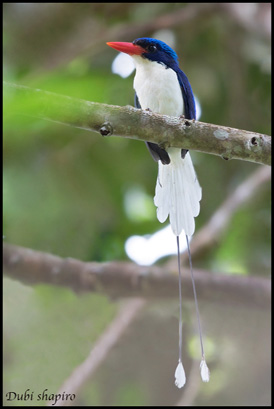
Common Paradise Kingfisher, copyright Dubi Shapiro, from the surfbirds galleries
|
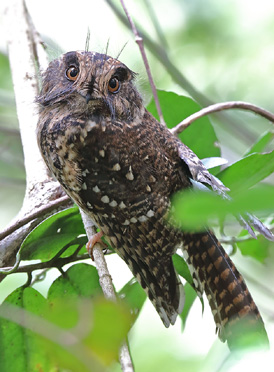
Mountain Owlet Nightjar, Arfak Mountains, West Papua, copyright Rob Hutchinson, from the surfbirds galleries
|

Rufescent Pigeon, near Kumul Lodge, Papua New Guinea, copyright Aidan G Kelly, from the surfbirds galleries
|
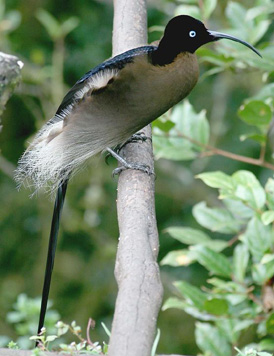
Brown Sicklebill (male), Kumul Lodge, Papua New Guinea, copyright Ashley Banwell, from the surfbirds galleries
|
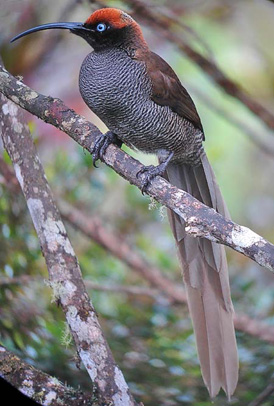
Brown Sicklebill (female), Kumul Lodge, Papua New Guinea, copyright Ashley Banwell, from the surfbirds galleries
|
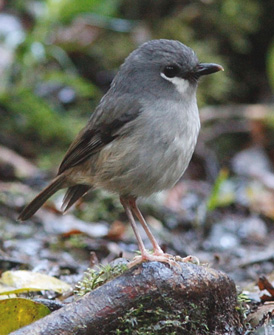
Ashy Robin, Arfak Mountains, West Papua, copyright Aidan G Kelly, from the surfbirds galleries
|
|
  |
|
|
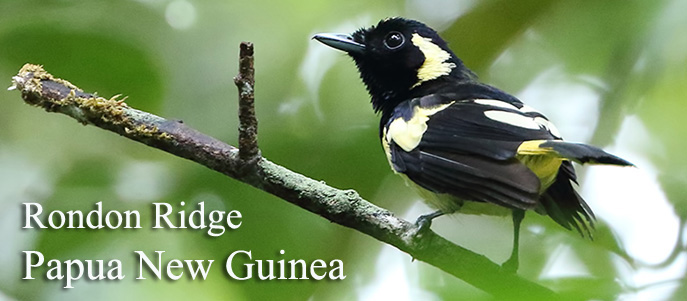
Biak Monarch, copyright Rob Hutchinson, from the surfbirds galleries
Exploring Rondon Ridge, Papua New Guinea with local guide, Joseph Tano.
Papua New Guinea is one of the wildest and least explored regions on earth. Its astonishingly rich avifauna includes nearly 400 endemic species, amongst them the exquisite birds-of-paradise.

|
|
|
Seven thousand one hundred feet above sea level, on the outer fringes of the Kubor Range, lies Rondon Ridge. Rondon Ridge is the pinnacle of luxury in a remote and rural setting.
Over 180 species of birds have been recorded in the rainforests around Rondon Ridge including ten species of bird of paradise, with six species found around the Lodge's grounds (Blue; Superb; Princess Stephanie Astrapia; Short-tailed Paradigalla; Brown Sicklebill and Lawes Parrotia). There are also two species of bower birds in the lodge grounds, namely Macgregors and Yellow-breasted Bower Bird. In future years we expect that there will be even more species around Rondon Ridge because we have planted many thousands of fruiting trees such as Schefferia and Butcher Fruiting.
 |
|
Raggiana Bird of Paradise, copyright Dani Lopez Velasco, courtesy Birdquest
The Raggiana Bird of Paradise is widespread and common throughout the tropical forests of eastern New Guinea. Males congregate in leks where they display to visiting females.
|
There are also other species near the Lodge such as Lorikeets, Honeyeaters, Parrots, Cuckoo Doves, Fruit Doves and Pigeons. There are other species on the ground such as Brown Quail, Forbes Forest-Rail, Bronze Ground Dove, Spotted Jewel Babblers, Buff-banded Rail and Mountain Mouse Warbler.
Night birding is also available and starts at 7.00 pm from the Lodge when we go out and look for Papuan Boobook, Feline Owlet-Nightjar, Sooty Owl and Large-tailed Nightjar.
Other species that can be seen in the Lodge grounds are...
New Guinea White-eye
Yellow Browed Melidectes
Black Throated Robin
Blue Grey Robin
Grey Wagtail
Sclater, Mottled & Black-headed Whistlers
New Guinea White-eye
Red Collared & Mountain Red-headed Myzomela
Yellowish Streaked Honey-eater
Long-tailed Shrike
White Shouldered fairy Wren
Island Leaf-Warbler
Pied Chat
Great Cuckoo-Dove
Papuan King Parrot
Red-breasted Pygmy Parrot
Blue Collared Parrot
Madarasz's Tiger Parrot
Papuan Frogmouth
Marbled Frogmouth and more....
Over 700 species of birds are found in Papua New Guinea, the world's richest island avifauna, and nearly half of these are found nowhere else!
The National Bird of Papua New Guinea, the Raggiana Bird of Paradise, is unsurprisingly a favorite for birdwatchers. The Raggiana is found along a back road near the Rondon Ridge Lodge along with Torrent Flycatcher, Marbled Honey Eater, Hooded Pitohui, Northern Fantail, Black-headed Whistler, Pacific Black Duck, Salvadori's Tiel and more....
The Lodge is located at 2,100 meters (7,100 feet) at the edge of montaine rainforest and there are walking trails going up to 2,640 meters (8,570 feet) from the lodge and from these trails you have a chance to see the spectacular plumage and exotic courtship rituals of the following species of bird of paradise; King of Saxony; Black and Brown Sicklebills and Princess Stephanie Astrapia.
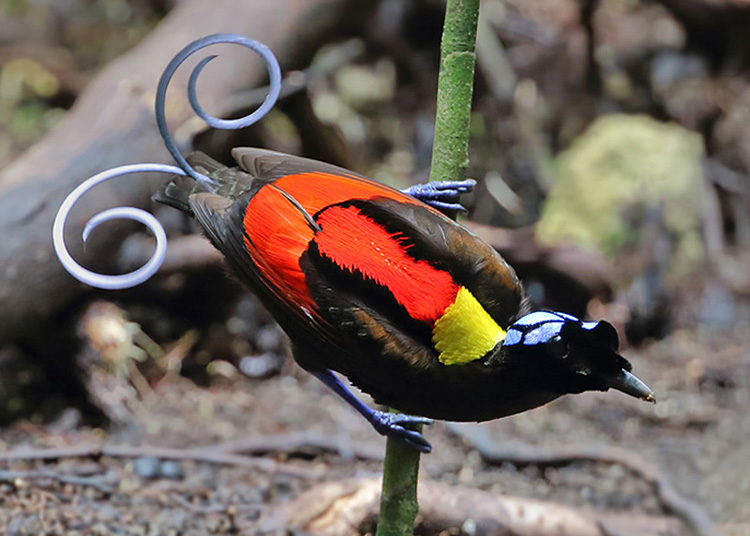 |
|
Wilson's Bird of Paradise, copyright Rob Hutchinson, from the surfbirds galleries
Its natural habitats are subtropical or tropical moist lowland forests, subtropical or tropical moist montane forests, and heavily degraded former forest.
|
On the trail to the higher elevations above, the following species can also be seen.
New Guinea Harpy-eagle
Pheasant Pigeon
Rufescent Imperial Pigeon
Papua Mountain Pigeon
Lesser Melampitta
Lesser Ground Robin
Blue capped Ifrita
Black Monarch
Hooded Cuckoo-shrike
Blacked billed Cuckoo-shrike
Wattled Bloughbill
Dwarf Cassowary
Modest Brehm's Tiger Parrot
Blue Faced Parrot-finch
Orange Crowned Fairy-wren
Papuan, Plum faced, Orange-billed & Yellow-billed Lorikeets
Black Throated Honeyeater
Canary Flycatcher
Black Pitohui
Fan-tailed, Mid Mountain, Streaked & Spotted Berrypecker
Tit Berrypecker
Large Scrub-wren
Rufus napped Whistler
Regent Brown backed Whistler
White Breasted Fruit-dove
Black Varied Sittella
Grey-streaked & Rufous-backed Honeyeater
Spotted Jewel Barbler
Dimorphic, Black & Friendly Fantail and more......
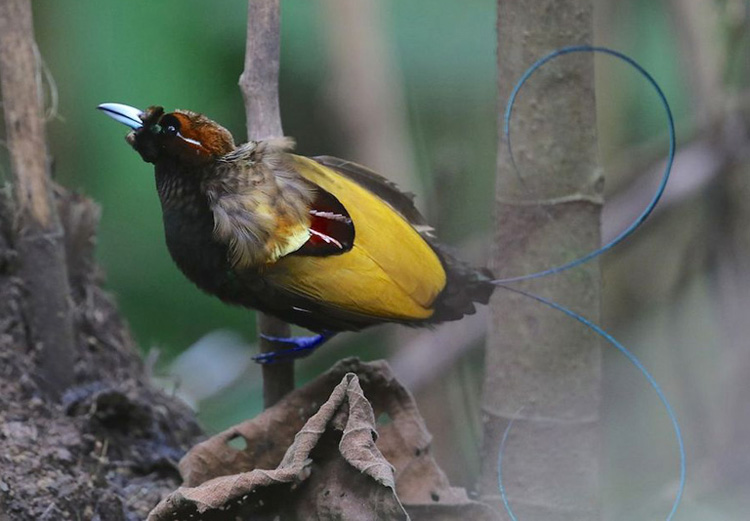 |
|
Magnificent Bird of Paradise, copyright Mark Sutton, from the surfbirds galleries
The Magnificent Bird of Paradise is distributed amongst the hill and mid-mountain forests of New Guinea. The male is polygamous and performs an elaborate courtship display.
|
Our birding guides would like to welcome you to come to Rondon Ridge, near Mount Hagen in the Highlands of Papua New Guinea, to see our very special birds, many of which are endemic to Papua New Guinea.
Twelve-wired Bird of Paradise, copyright Rob Hutchinson, from the surfbirds galleries.
The Twelve-wired Bird of Paradise is found in lowland and swamp forests throughout New Guinea. The male displays from an exposed
vertical perch with his breast-shield flared.
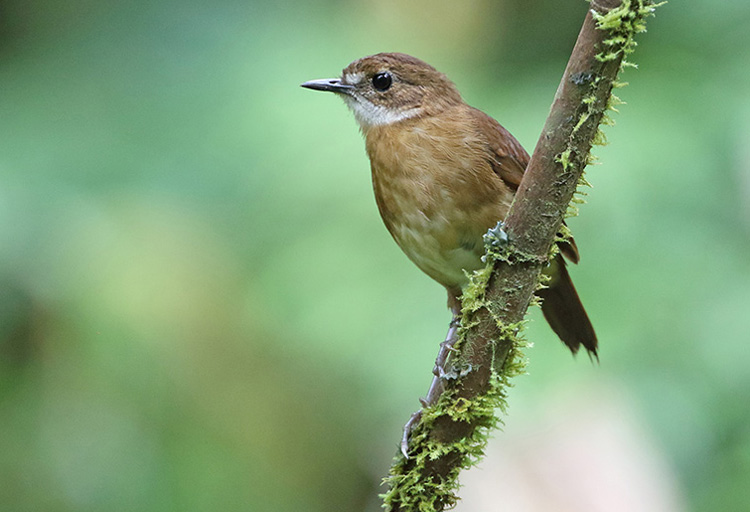 |
|
Lesser Ground Robin, copyright Rob Hutchinson, from the surfbirds galleries
|
 |
|
Wattled Ploughbill, copyright Denzil Morgan, from the surfbirds galleries
The Wattled Ploughbill is endemic to the central mountain ranges of New Guinea
|
 |
|
Western Crowned Pigeon, copyright Rob Hutchinson, from the surfbirds galleries
The Western Crowned Pigeon is endemic to the lowland forests of northwestern New Guinea. Hunted for food and its plumes, it remains common only in remote areas.
|
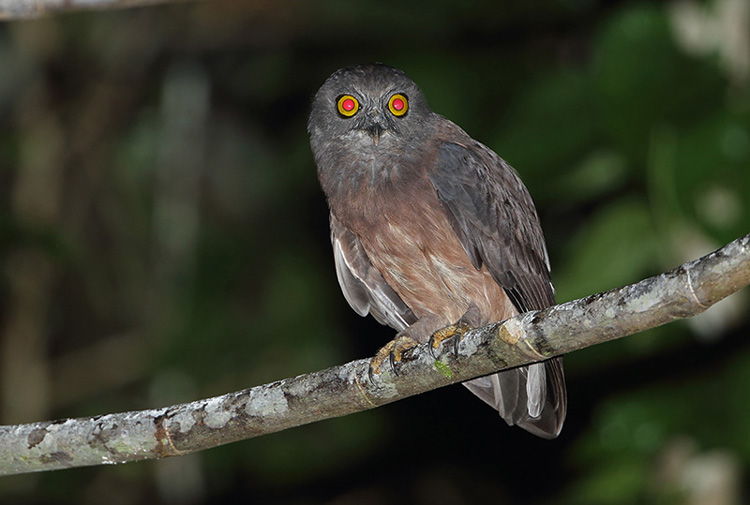 |
|
Papuan Boobook, copyright Rob Hutchinson, from the surfbirds galleries
The Papuan Boobook is found in lowland forest, montane forests and submontane forests, mainly on the forest edge. It is found in northwestern and southeastern New Guinea.
|
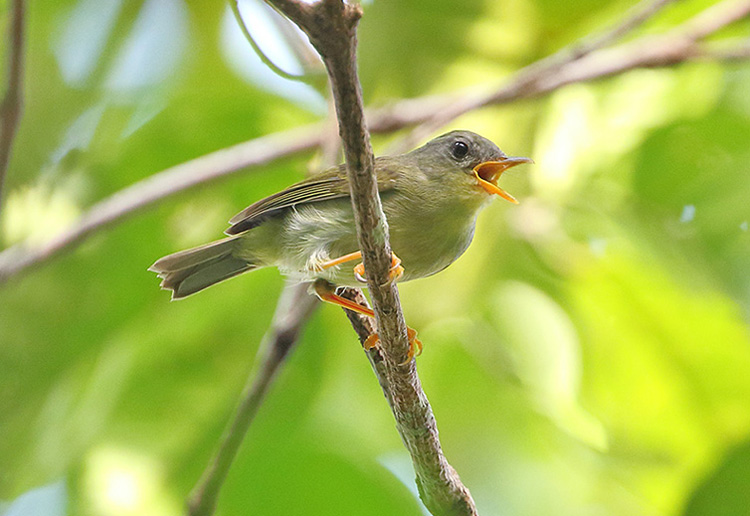 |
|
Biak Leaf Warbler, copyright Rob Hutchinson, from the surfbirds galleries
The Biak Leaf Warbler is a rare and difficult to find species
|
|
|
|
|

